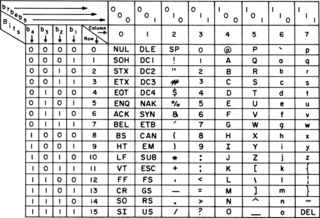 W
WASCII, abbreviated from American Standard Code for Information Interchange, is a character encoding standard for electronic communication. ASCII codes represent text in computers, telecommunications equipment, and other devices. Most modern character-encoding schemes are based on ASCII, although they support many additional characters.
 W
WThe Cambridge Ring was an experimental local area network architecture developed at the Computer Laboratory, University of Cambridge starting in 1974 and continuing into the 1980s. It was a ring network with a theoretical limit of 255 nodes, around which cycled a fixed number of packets. Free packets would be "loaded" with data by a machine wishing to send, marked as received by the destination machine, and "unloaded" on return to the sender; thus in principle, there could be as many simultaneous senders as packets. The network ran over twin twisted-pair cabling.
 W
WCompunet was a United Kingdom based interactive service provider, catering primarily for the Commodore 64 but later for the Commodore Amiga and Atari ST. It was also known by its users as CNet.
 W
WThe Computer Conservation Society (CCS) is a British organisation, founded in 1989. It is under the joint umbrella of the British Computer Society, the London Science Museum and the Manchester Museum of Science and Industry.
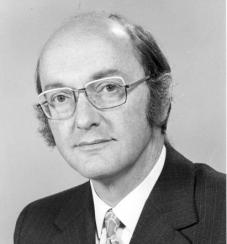 W
WDonald Watts Davies, was a Welsh computer scientist who was employed at the UK National Physical Laboratory (NPL).
 W
WThe Department of Computer Science and Technology, formerly the Computer Laboratory, is the computer science department of the University of Cambridge. As of 2007 it employed 35 academic staff, 25 support staff, 35 affiliated research staff, and about 155 research students. The current Head of Department is Professor Ann Copestake.
 W
WDollis Hill is an area in northwest London, which consists of the streets surrounding the 35 hectares Gladstone Park. It is served by a London Underground station, Dollis Hill, on the Jubilee line, providing good links to central London. It is in the London Borough of Brent, close to Willesden Green, Neasden and Cricklewood, and in the latter's postal district (NW2).
 W
WEast London Tech City is the term for a technology cluster of high-tech companies located in East London, England. Its main area lies broadly between St Luke's and Hackney Road, with an accelerator space for spinout companies at the Queen Elizabeth Olympic Park.
 W
WA Premium Bond is a lottery bond issued by the United Kingdom government since 1956. At present it is issued by the government's National Savings and Investments agency.
 W
WSamuel Fedida, OBE was an Egyptian-born British telecommunication engineer responsible at Prestel for the development of Viewdata.
 W
WThe Ferranti Market Research Terminal (MRT) was, arguably, the world’s first application-specific handheld computer. It was designed specifically for the market research sector as a means to augment the regular clipboard schemes that, at the time, were common-place, in social and market research. Despite having an appearance of a calculator built into a clipboard, the reality was that the unit contained a sophisticated form of programmable data-logger that, in response to an interviewer reading questions to the interviewee, had answers digitally recorded via pressing appropriate keys on the unit. The unit contained a bespoke operating system to support field based market research. The Ferranti Market Research Terminal (MRT) is also of historical significance to the computing industry since it marked the last original computer design from Ferranti, a long established business that had risen to fame through a collaboration Manchester University to produce the "Mark 1", the world’s first commercial computer and later with Cambridge University producing the "Atlas" and "Titan" computers which, at their peak, held around 25% of the computing market.
 W
WThomas Harold Flowers, BSc, DSc, OBE was an English engineer with the British General Post Office. During World War II, Flowers designed and built Colossus, the world's first programmable electronic computer, to help solve encrypted German messages.
 W
WStephen Byram Furber is a British computer scientist, mathematician and hardware engineer, currently the ICL Professor of Computer Engineering in the Department of Computer Science at the University of Manchester, UK. After completing his education at the University of Cambridge, he spent the 1980s at Acorn Computers, where he was a principal designer of the BBC Micro and the ARM 32-bit RISC microprocessor. As of 2018, over 100 billion variants of the ARM processor have been manufactured, powering much of the world's mobile computing and embedded systems.
 W
WDouglas Rayner Hartree was an English mathematician and physicist most famous for the development of numerical analysis and its application to the Hartree–Fock equations of atomic physics and the construction of a differential analyser using Meccano.
 W
WSir Charles Antony Richard Hoare is a British computer scientist. He developed the sorting algorithm quicksort in 1959–1960. He also developed Hoare logic for verifying program correctness, and the formal language communicating sequential processes (CSP) to specify the interactions of concurrent processes and the inspiration for the programming language occam.
 W
WIBM Hursley is a research and development laboratory belonging to International Business Machines in the village of Hursley, Hampshire, England. Established in Hursley House, an 18th-century Queen Anne style mansion in 1958, the facility has been instrumental in the development of IBM's software technologies since the 1950s. It is still the home of development for CICS and MQ technology. Among the software developed by IBM Hursley is the Customer Information Control System (CICS), used in ATMs, which was the first Hursley product with a billion dollars in annual revenue.
 W
WInventions That Changed the World is a five-part BBC Two documentary series presented by Jeremy Clarkson. First broadcast on 15 January 2004, the programme takes a look at some of the inventions that helped to shape the modern world. The UKTV channel Yesterday frequently repeats this series. However, episodes are edited to 46 minutes to allow for commercials to air in the one-hour time slot.
 W
WJanet is a high-speed network for the UK research and education community provided by Jisc, a not-for-profit company set up to provide computing support for education. It serves 18 million users and is the busiest National Research and Education Network in Europe by volume of data carried. JANET was previously a private, UK government-funded organisation, which provided the Janet computer network and related collaborative services to UK research and education.
 W
WTom Kilburn was an English mathematician and computer scientist. Over the course of a productive 30-year career, he was involved in the development of five computers of great historical significance. With Freddie Williams he worked on the Williams–Kilburn tube and the world's first electronic stored-program computer, the Manchester Baby, while working at the University of Manchester. His work propelled Manchester and Britain into the forefront of the emerging field of computer science.
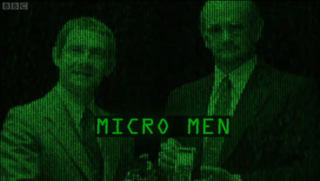 W
WMicro Men, working title Syntax Era is a 2009 one-off BBC drama television programme set in the late 1970s and the early-mid 1980s, about the rise of the British home computer market. It focuses on the rivalry between Sir Clive Sinclair, who developed the ZX Spectrum, and Chris Curry, the man behind the BBC Micro.
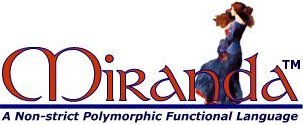 W
WMiranda is a lazy, purely functional programming language designed by David Turner as a successor to his earlier programming languages SASL and KRC, using some concepts from ML and Hope. It was produced by Research Software Ltd. of England and was the first purely functional language to be commercially supported.
 W
WThe Nimrod, built in the United Kingdom by Ferranti for the 1951 Festival of Britain, was an early computer custom-built to play Nim, inspired by the earlier Nimatron. The twelve-by-nine-by-five-foot (3.7-by-2.7-by-1.5-metre) computer, designed by John Makepeace Bennett and built by engineer Raymond Stuart-Williams, allowed exhibition attendees to play a game of Nim against an artificial intelligence. The player pressed buttons on a raised panel corresponding with lights on the machine to select their moves, and the Nimrod moved afterward, with its calculations represented by more lights. The speed of the Nimrod's calculations could be reduced to allow the presenter to demonstrate exactly what the computer was doing, with more lights showing the state of the calculations. The Nimrod was intended to demonstrate Ferranti's computer design and programming skills rather than to entertain, though Festival attendees were more interested in playing the game than the logic behind it. After its initial exhibition in May, the Nimrod was shown for three weeks in October 1951 at the Berlin Industrial Show before being dismantled.
 W
WThe NPL network or NPL Data Communications Network was a local area computer network operated by a team from the National Physical Laboratory in London that pioneered the concept of packet switching.
 W
WOXO is a video game developed by A S Douglas in 1952 which simulates a game of noughts and crosses. It was one of the first games developed in the early history of video games. Douglas programmed the game as part of a thesis on human-computer interaction at the University of Cambridge.
 W
WRobin John Popplestone was a pioneer in the fields of machine intelligence and robotics. He is known for developing the COWSEL and POP programming languages, and for his work on Freddy II with Pat Ambler at the University of Edinburgh Artificial Intelligence laboratory.
 W
WA Premium Bond is a lottery bond issued by the United Kingdom government since 1956. At present it is issued by the government's National Savings and Investments agency.
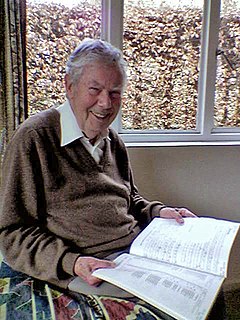 W
WHugh McGregor Ross was an early pioneer in the history of British computing. He was employed by Ferranti from the mid-1960s, where he worked on the Pegasus thermionic valve computer. He was involved in the standardization of ASCII and ISO 646 and worked closely with Bob Bemer. ASCII was first known in Europe as the Bemer-Ross Code. He was also one of the four main designers of ISO 6937, with Peter Fenwick, Bernard Marti and Loek Zeckendorf. He was one of the principal architects of the Universal Character Set ISO/IEC 10646 when it was first conceived.
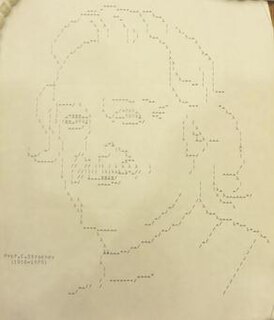 W
WChristopher S. Strachey was a British computer scientist. He was one of the founders of denotational semantics, and a pioneer in programming language design and computer time-sharing. He was a member of the Strachey family, prominent in government, arts, administration, and academia.
 W
WAlan Mathison Turing was an English mathematician, computer scientist, logician, cryptanalyst, philosopher, and theoretical biologist. Turing was highly influential in the development of theoretical computer science, providing a formalisation of the concepts of algorithm and computation with the Turing machine, which can be considered a model of a general-purpose computer. Turing is widely considered to be the father of theoretical computer science and artificial intelligence. Despite these accomplishments, he was never fully recognised in his home country during his lifetime due to the prevalence of homophobia at the time and because much of his work was covered by the Official Secrets Act.
 W
WWilliam Thomas Tutte OC FRS FRSC was a British-born Canadian codebreaker and mathematician. During the Second World War, he made a brilliant and fundamental advance in cryptanalysis of the Lorenz cipher, a major Nazi German cipher system which was used for top-secret communications within the Wehrmacht High Command. The high-level, strategic nature of the intelligence obtained from Tutte's crucial breakthrough, in the bulk decrypting of Lorenz-enciphered messages specifically, contributed greatly, and perhaps even decisively, to the defeat of Nazi Germany. He also had a number of significant mathematical accomplishments, including foundation work in the fields of graph theory and matroid theory.
 W
WViewdata is a Videotex implementation. It is a type of information retrieval service in which a subscriber can access a remote database via a common carrier channel, request data and receive requested data on a video display over a separate channel. Samuel Fedida, who had the idea for Viewdata in 1968, was credited as inventor of the system. The first prototype became operational in 1974. The access, request and reception are usually via common carrier broadcast channels. This is in contrast with teletext.
 W
WThe Web Science Trust (WST) is a UK Charitable Trust with the aim of supporting the global development of Web science. It was originally started in 2006 as a joint effort between MIT and University of Southampton to formalise the social and technical aspects of the World Wide Web. The Trust coordinates a set of international "WSTNet Laboratories" that include academic research groups in the emerging area of Web science.
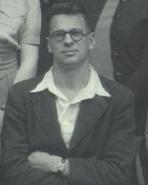 W
WDavid John Wheeler FRS was a computer scientist and professor of computer science at the University of Cambridge.
 W
WSir Maurice Vincent Wilkes was a British computer scientist who designed and helped build the Electronic delay storage automatic calculator (EDSAC), one of the earliest stored program computers and invented microprogramming, a method for using stored-program logic to operate the control unit of a central processing unit's circuits. At the time of his death, Wilkes was an Emeritus Professor of the University of Cambridge.
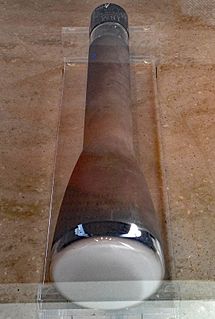 W
WThe Williams tube, or the Williams–Kilburn tube after inventors Freddie Williams and Tom Kilburn, is an early form of computer memory. It was the first random-access digital storage device, and was used successfully in several early computers.
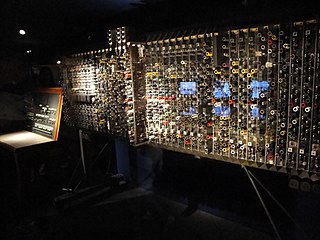 W
WMichael Woodger is a pioneering English computer scientist. He was influential in the development of the early Pilot ACE computer, working with Alan Turing, and later the design and documentation of programming languages such as ALGOL 60 and Ada. He was based at the National Physical Laboratory (NPL) located in Teddington, London, for most of his career.
 W
WPhilip Mayne Woodward was a British mathematician, radar engineer and horologist. He achieved notable success in all three fields. Before retiring, he was a Deputy Chief Scientific Officer at the Royal Signals and Radar Establishment (RSRE) of the British Ministry of Defence in Malvern, Worcestershire.